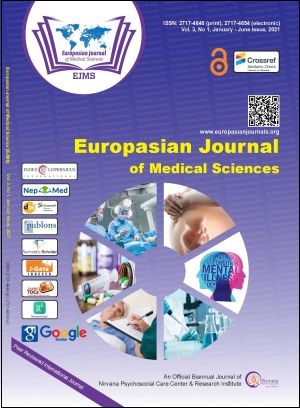Relaparotomy after Cesarean Section in a Tertiary Center
Keywords:
Cesarean section, CS, relaparotomy, morbidity, Gynecological problems, Uterine disordersAbstract
Background: Relaparotomy after cesarean section is associated with significant maternal morbidity and mortality which can be prevented with proper precaution during the primary surgery. The objective of the study was to determine factors associated with relaparotomy after cesarean section.
Methods: A hospital based descriptive cross sectional study conducted by analyzing the records of 3 years from 1st July 2017 to 30th June 2020, among the women who underwent relaparotomy after cesarean section at Paropakar Maternity and Women’s Hospital, Kathmandu.
Results: There were 21,270 cesarean sections among 64,475 deliveries with the mean incidence of 32.6%. A total of 22 patients underwent relaparotomy out of which 18 had their primary surgery performed at our hospital i.e. 0.08% of the total caesarean section, and 4 cases were referred from peripheries. 60% of primary surgery were done by residents and the commonest indications of primary surgery were previous CS (36.3%) and obstructed labor (27.2%). Primary PPH was the major indication for laparotomy (31.8%) with mean interval from primary surgery of 4.7 hours followed by burst abdomen (22.7%) and secondary PPH (18.1%). Hysterectomy was the commonest operative intervention done during relaparotomy accounting for 45.4% followed by tension suture for burst abdomen (18%). There were 2 maternal death among them which were due to aspiration pneumonia following eclapmsia and DIC.
Conclusion: Relaparotomy has increased risk of adverse maternal outcome but still is a lifesaving intervention. Early recognition, timely intervention and multidisciplinary teamwork helps to decrease the complications associated with it.
Downloads
Downloads
Published
How to Cite
Issue
Section
License
Copyright (c) 2021 Sandesh Poudel, Shree Prasad Adhikari, Snigdha Rai, Sangeeta Mishra, Renuka Tamrakar

This work is licensed under a Creative Commons Attribution 4.0 International License.
The author(s) retain the ownership of the copyrights for their work published in EJMS without any restrictions. Upon submission, the author(s) grants EJMS a license to publish, including to display, store, copy, and reuse the published content.
License to Publish
By submitting a manuscript to EJMS, the author(s) grant the journal a non-exclusive license to:
- Publish and distribute the content in all formats, media, and platforms (both existing and future), while identifying EJMS as the original publisher.
- Reproduce, display, and store the content in both print and online formats, including institutional and digital repositories.
- Translate, adapt, and summarize the work, including reprints, extracts, and abstracts.
- Develop derivative works based on the original content.
- Include the work in electronic databases and provide links to third-party materials.
Creative Commons Licensing
In addition to EJMS’s publishing rights, authors grant third parties the right to use, share, and distribute their work under the Creative Commons Attribution 4.0 (CC BY 4.0) International License. This allows unrestricted use of the content, provided proper attribution is given to the original author(s) and the journal.

